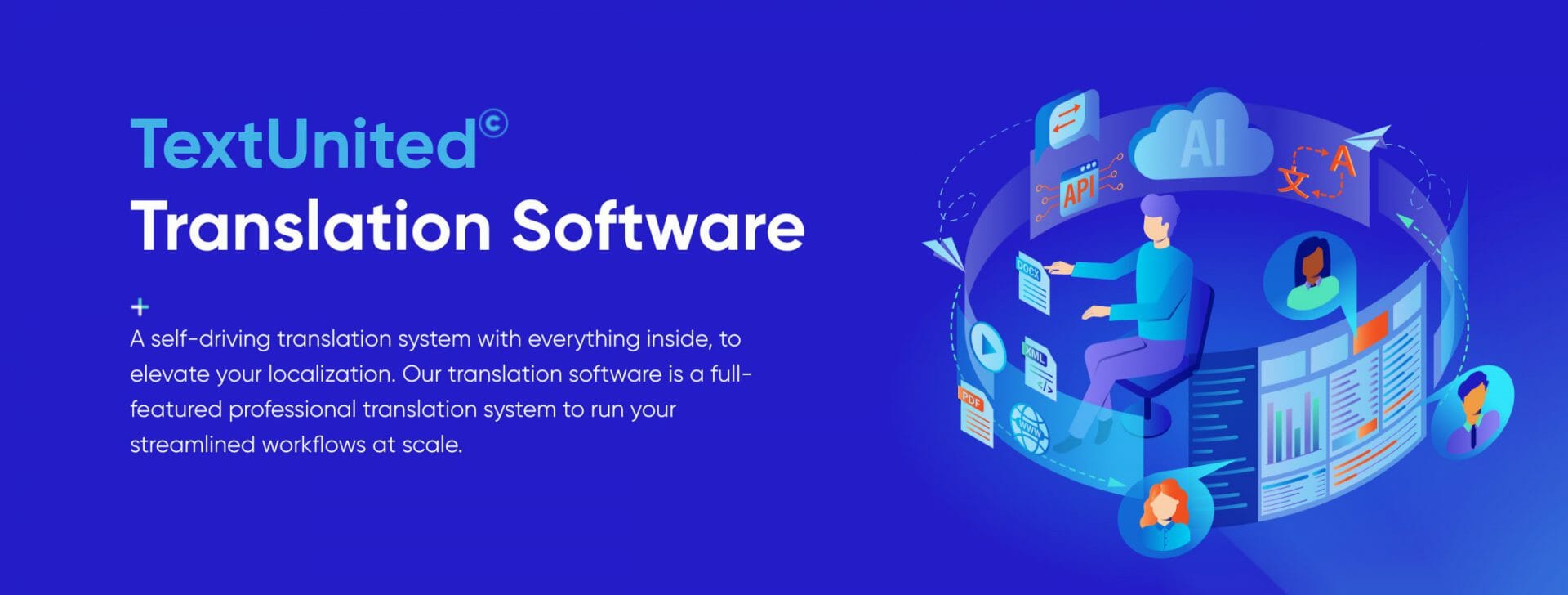There are times when English just won’t cut it. 4 out of 5 times, actually, according to Babbel.
Just as you can’t expect the locals of Skopelos, Madeira or Aberdeen to converse with you in fluent English, you also can’t expect overseas customers to navigate to and around your site with frictionless ease.
And as globalisation becomes ever-more achievable in a world of enhanced connectivity, can you really afford to neglect the 80% of the global population who don’t speak English?
With a multilingual website, you don’t have to. And setting one up might be a lot easier than you think…
- Step 1: Establish your Primary Countries
- Step 2: Rephrase your Keywords
- Step 3: Translate your Content
- Step 4: Offer Multilingual Support
Step 1: Establish your Primary Countries
It doesn’t take a genius to realise that the biggest potential for establishing a multilingual website comes from the countries that access it the most.
Sure, it would be great to translate into Spanish to appeal to the huge Hispanophone market, but when you’ve got 5x as many native Arabic speakers as Spanish speakers coming to your site, it’s clear which one you should prioritise.
So the first question you need to ask yourself is this: “Where is my traffic coming from?”
Google Analytics is a great tool to shed light on this. You can use it to find a map of all the visits you’ve ever had, as well as which country they’re coming from.
In this example, the biggest audiences may be the U.S and the U.K, but there are a substantial number of visitors coming from Germany and Brazil.
If traffic from a certain country is high, but so is the bounce rate, that’s a clear indicator that visitors from that country are not enjoying a localised experience when they arrive on your site.
That’s something you can certainly change.
💡 Tip: Start small.
Don’t commit to translating your site into a bunch of different languages at the same time.
Translation is a precision art. Take 2 or 3 of your highest value languages and translate them properly before moving on to others.
Step 2: Rephrase your Keywords
Here’s a scenario for you. Let’s say I’ve got some great pet hamster products that I want to make available on the Vietnamese market.
Using a free plug-in, I translate my site into Vietnamese, including all keywords I’m looking to rank for in Vietnamese search results.
Machine translation translates my keyword ‘hamster food’ as thức ăn cho chuột đồng. Not knowing any better in a language I don’t speak, I don’t question the machine.
The problem? Chuột đồng is not a commonly used word for ‘hamster’ in Vietnam; it actually translates directly as ‘field rat’, which, when grilled, is a delicacy in southern Vietnam.
So, I’ve inadvertently gone from advertising hamster food to advertising field rats as food for humans. If I’d typed my keyword into Google Images, I might have found that out myself, but I relied too heavily on machine translation during my set-up stage and now I’ve got 80 guys from Saigon emailing me every day for high-quality rat meat.
Image credit: Ahrefs
The moral of the story here is this: take extra special care when translating your keywords.
It doesn’t have to be as drastic an error as the one above to ruin your international search presence; even a minuscule difference in keyword phrasing is enough to ensure everlasting obscurity for a multilingual website.
Before you dive into full site translation, try this:
- List the highest value keywords on your site.
- Translate each one into your target languages through machine translation.
- Perform a Google search for each one in those target languages.
- Use Google Translate and Images to get a feel for whether or not your keyword fits in with other results.
- If not, use a professional translator or ask in a local language community for the most common, natural way to phrase your keyword.
💡 Tip: Remember search intent.
Bear in mind that search intent changes between languages. Even if machine translation translates your keyword in a completely natural manner, there’s no guarantee that potential customers in your target language are looking for the kind of content you’re providing.
For example, the top results for the keyword ‘best school supplies’ in English are almost entirely listicles. The same keyword in Italian could return top results that are product pages, information pieces, or even news articles, meaning your listicle, translated into Italian, could sit much lower in the rankings compared to your original English version.
Of course, the opposite can also be true. You could find that your translated content hits a sweet spot of international search intent that it never did in English.
Just be wary of this. Unforeseeable wins and losses are a constant amongst websites hosting multiple languages.
Step 3: Translate your Content
Understandably, there’s always a temptation to simply rely on machine translation for the content of your new multilingual website.
And, yes, while there are cheap, quick machine translation plug-ins for pretty much anywhere where websites are hosted, the previous example is just one way in which non-tailored translation can skew carefully crafted content wildly away from the international audience you’re aiming it at.
This is a big job with mammoth potential, and it deserves to be done by a TMS.
A TMS is a Translation Management System. It lets you see and arrange all translation tasks for your site, helping you to kick off through machine translation and refine translated content either through your own translation resources or through in-house translators working for the TMS.
TextUnited is a free-to-use TMS service that can adapt website content initially through automated translation, before refining any patchy syntax into highly accurate, highly targeted information for your customers. Better yet still, for the over 30% of sites worldwide built with WordPress, TextUnited recently updated its WordPress Plugin (which is just as straightforward to use as WordPress itself!). Bringing you all the extensive free and paid features of a powerful TMS, all from within the dashboard – no coding needed.
💡 Tip: Don’t forget to localise.
Professional, human translation also helps to overcome the threat of your company’s message becoming one of many localisation fails.
Localisation is translation to the nth degree. It’s a process that deals with translating cultural influences, humour, slang and every other semantic barrier that keeps a message from having the same punch in another language.
When Swedish company Electrolux started selling their vacuums in the United States in the 70s, they found that their tagline – Nothing sucks like an Electrolux – truly sucked.
Not accounting for what is a very popular and negative slang word was a rather unfortunate downfall for Electrolux. But it’s also a lesson to those creating a multilingual website to check thoroughly for pitfalls in serving up translated content to the international market.
It’s something that Nintendo does consistently. With the majority of its games being made in Japan, Nintendo has developed its own process of localisation to ensure that Western audiences aren’t confused by cultural references or certain characters’ sensibilities.
With regards to your own content, the same issues could manifest in your use of tone, images, characters, measurement systems or culturally sensitive constructs like humour or sarcasm.
Whatever message you’re trying to get across in your target language, consider relying on someone with a deep understanding of that language to help you out.
Step 4: Offer Multilingual Support
After you’ve targeted your languages, nailed down your translated keywords and translated (and localised) your content – you’re ready to accept customers.
The only thing is, are the customers ready to accept you? A study by American Express found that after a negative customer service experience, 78% probably won’t, and will back out of a purchase (Glance).
That’s why multilingual customer support is the last crucial step in the international buyer journey. Once on the site, you need to make sure non-English speaking customers can find their way towards a purchase.
That could be literally helping them navigate through the checkout, providing them with more product information in their language, or convincing them to commit to a download or subscription without the hindrance of a language barrier.
Image credit: Midobay
There are a few ways you can set up multilingual customer support on your site:
- Use Chatbots – The go-to for most multiple language websites is a chatbot. They’re quick, cheap and are able to handle nearly 70% of all enquiries from start to end (Startup Bonsai). Their most glittering endorsement comes from the fact that these days, more and more customers claim to be having positive experiences with chatbots.
- Translate your Knowledge Base – Customers, especially younger ones, tend to look for an answer online before contacting customer support. If you don’t already have a knowledge base to help those who get lost, you’d better make one. If you do, translate it!
- Use Multilingual Sentiment Analysis – MSA is an emerging AI that can detect whether or not a customer is having a positive or negative experience in any language. It helps chatbots take a more emotion-sensitive tone and it performs a wealth of translation tasks for live support agents.
💡 Tip: Be open on the right channels.
What’s your go-to channel for reaching customer service? Live chat? Email? Phone?
It’s likely that whichever you choose will be a decision based partly on your culture. People from the U.S and Brazil are more likely to favour live chat over those from Germany and Japan. Yet, customers in Germany love getting support via phone, while those in Japan favour online self-service (Statista).
Check out which preferences your customers have before establishing your channels. It would be an enormous waste of time and resources to set up SMS-based customer support, only to find out that no one who speaks any of your targeted languages actually has the cultural tendency to use it.
All in All…
Building a multilingual website is not the massive undertaking it once was.
Of course, there are issues and pitfalls aplenty, but with the prize of consistent, high-value international business standing so much closer to the average person than at any point in history, there’s never been a better time to invest.





